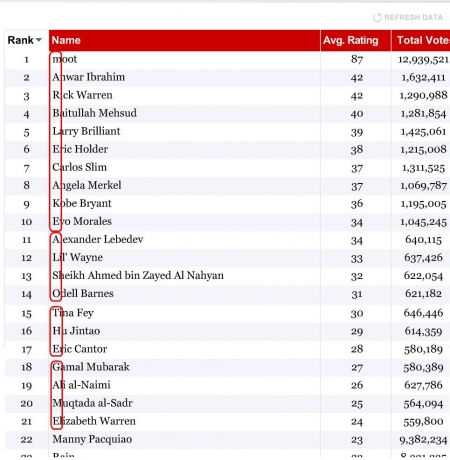… long before we had company internal blogs (at Amazon.com), Jacob Gabrielson wrote and circulated a brilliant essay called Zero Config. At least that’s what people call it nowadays. The actual title is longer, but famous essays tend to get shortened, like the way Dick Gabriel’s The Rise of “Worse is Better” became widely known as the “Worse is Better” essay.
Jacob’s essay clearly articulated an acute pain we’d all been feeling, but which nobody had elevated to the status of First-Class Pain. That is, configuration was a huge problem, but it hadn’t made it onto anyone’s radar as an official problem to which we should dedicate company resources.
Sure, everyone had been bitching and whining about it, but we bitch and whine about everything around here, so it wasn’t a problem that was readily discernable in all the noise.
Jacob’s paper was brilliant on several levels. He was able to distinguish configuration as a first-class problem, worthy of a paper — and this was back when there was almost no precedent for writing and circulating papers within Amazon. He made his point in an amusing and memorable way, writing with considerable style and intellectual force. And he articulated a long-term vision for fixing the problem. His goal wasn’t to solve it, but simply to increase general awareness of the problem. It was a little masterpiece.
And nobody read it.
I read it, although not immediately; as I recall, it may have been a few days before I got around to it. But it was relatively soon after he’d circulated it. When I finally did read it, I was very excited, and thought everyone ought to read it immediately. I started asking around, and found that only a few of the people on the circulation list had read it. I felt rather deflated: the company was missing out on an important insight, one that could help steer us in the direction of faster development, more stability, and less pain. I’m sure Jacob felt pretty bummed about having wasted all that time on the essay.
I didn’t give Jacob’s essay much thought after that, although I’d of course internalized his core ideas, which helped me steer my own teams’ work occasionally. About eight months went by, and then the most remarkable thing happened: suddenly all the VPs were talking about the “config problem”. They were citing Jacob’s paper, and from the way they were talking about it, it was obviously considered a well-known and long-standing problem: in other words, in 8 months it had gone from a relatively unknown issue to one that had permeated our corporate consciousness.
It didn’t happen overnight, either. I started hearing references to the paper in meetings about 4 months after he published it, and the frequency gradually went up, until the config problem finally emerged on various strategic planning agendas almost a year after Jacob had written about it.
I was surprised at the time that it took so long, but now it makes sense. People will only read something as meaty as an essay when the time is right. The right time isn’t going to coincide for everyone.
Like anything else, word of mouth drives adoption for essays. Only a few people will read it at first: friends, and a few people who just stumble across it and think it looks potentially interesting. If the essay isn’t relevant enough, then people will just forget about it and move on. No big deal.
But if your essay strikes the right chord with enough people, it will eventually reach critical mass, and you’ll have effected change in the organization. It may not be a huge change, but think about it: getting an idea through to a thousand people, in such a way that they all remember it and more or less agree with you — this is no easy feat. You can’t do it with a single email, unless it’s a really controversial one, and then you’ll just be infamous. You can’t do it with a single public speech: only the folks in the room are likely to remember it. Trying to do it with hallway conversations doesn’t scale.
Jacob’s Zero Config article demonstrated that essays are the best way to change minds on a large scale, maybe the only way, and even then, it often takes months for the message to sink in via mass osmosis.
